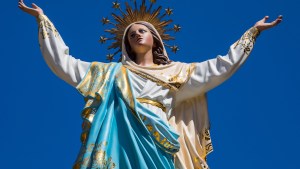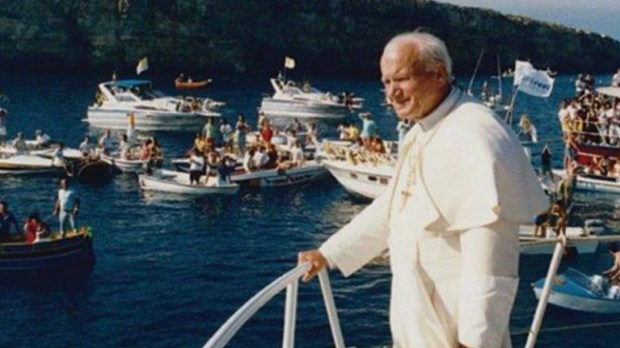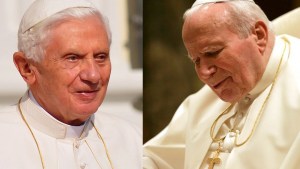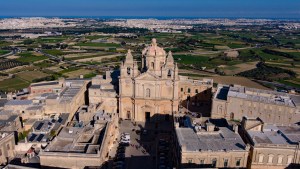Lenten Campaign 2025
This content is free of charge, as are all our articles.
Support us with a donation that is tax-deductible and enable us to continue to reach millions of readers.
“An island of faith, heroism and devotion”: this is how John Paul II described the island of Malta in the Co-Cathedral of St. John in Valletta (May 25, 1990).
It was a special visit on 25 May 1990, almost 26 years after the independence of Malta whose population was 99% Catholic at the time. “And as the Church in Malta awaits the Third Millennium, I wish to offer encouragement and hope for an even more glorious future,” the pontiff said.
Matteo Bruni, director of the Press Office, told journalists accredited at the Vatican that it was a trip with 13 speeches and great popular acclaim.
“I must confess that I am admiring not only the natural beauty of these islands and of the sea, but also their splendid artistic heritage,” Pope John Paul II said of Malta. “Malta will make a lasting contribution to the security and progress both of the Mediterranean area and of the entire world”, said John Paul II at the Grand Master’s Palace (May 25, 1990).
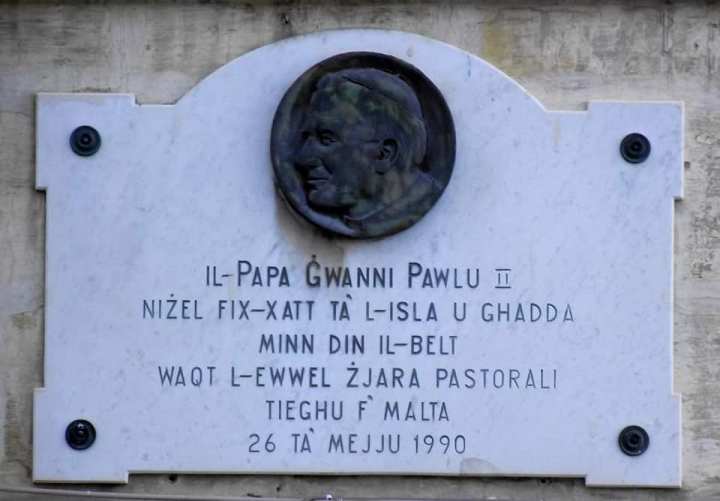
At the Marian Shrine of Mellieha (Valletta), the Pope stressed that Malta is a country “where the Catholic faith has flourished for centuries,” and expressed his hope that its men and women would continue to “make evident to their neighbors the mystery of God’s love as it has been revealed in Jesus Christ.”
The Pope warned on that trip about the changes brought by a “secularized culture” and spoke about the trap of a “false culture of appearances.”
The Eucharistic celebration on the esplanade of the shrine of Ta’Pinu, on the island of Gozo, was also a historic moment.
John Paul II underlined the great hospitality and fortitude of the Maltese islanders, including in the tourist sector: “Whether your work is at home, in the fields or at sea, in the factories or in Malta’s growing tourist industry, offer it to the Lord as a pleasing sacrifice in preparation for the coming of his kingdom!”
In the footsteps of St. Paul
St. John Paul II presented himself as a pilgrim following in the footsteps of St. Paul, who brought the Christian faith to these places long ago. And at the Ta’ Pinu Shrine, he recalled the strong Catholic heritage of the children of Malta, praying that the mighty acts of God might continue to manifest themselves there, then and in the future.
John Paul II explained that Malta represents “a wonderful symbiosis of European and Mediterranean cultures.” In the context of the end of the Cold War, he praised Malta’s “good position” to “observe and participate in the ongoing changes.”
Pope John Paul II wanted to meet the workers of Malta in St. Margaret of Cottonera Square, inviting them to continue with the “outstanding virtue of the working men and women of Malta” which is their solidarity: “a commitment to the common good; a rejection of selfishness and irresponsibility.”
During his farewell address, the Pope re-emphasized the fidelity of the Maltese people to their cultural and religious heritage. “Your desire to remain faithful to this precious legacy as you seek to promote your development for the good of all is certainly a sign of great hope for Malta’s future,” he said at the end of his 48th apostolic journey.
When St. Paul preached on Malta, tradition holds that he stayed in a cave in Rabat, now found under a church dedicated to the saint. John Paul II visited the grotto on May 27, 1990, and Benedict XVI prayed there on April 17, 2010, on the occasion of the 1950th anniversary of the shipwreck of St. Paul.
John Paul II’s second journey to Malta
John Paul II visited Malta a second time on May 8-9, 2001. He showed intense fatigue during this visit, a few days before his 81st birthday and at the end of an intense and delicate journey that also included Greece and Syria.
On May 8, 2001, the Pope arrived in Valletta somewhat weakened by the previous days of his journey. Malta, he said, “shows that one can still find in Malta the hospitality that was given to St. Paul the Apostle”.
This visit to Malta was shorter than the previous one, with only four speeches, but it was a continuation of his year 2000 Jubilee trips.
“With this visit, my Jubilee pilgrimage concludes,” he said. And today, “following in the footsteps of St. Paul, I have returned to you, dear people of Malta,” said John Paul II at the conclusion of this ambitious program.
Today, Granary Square, Floriana, is one of the largest open spaces in Malta and is used for large events. It was there, on May 9, 2001, that St. John Paul II celebrated the beatification Mass of three Maltese:
Priest George Preca (1880-1962), founder of the Society of Christian Doctrine; Ignatius Falzon (1813-1865), a member of the Franciscan Third Order who evangelized British soldiers stationed on the island; and Benedictine nun Maria Adeodata Pisani (1806-1855).
In the same square, Benedict XVI presided over the Eucharistic celebration in April 2010, on the occasion of his apostolic journey to the island.
